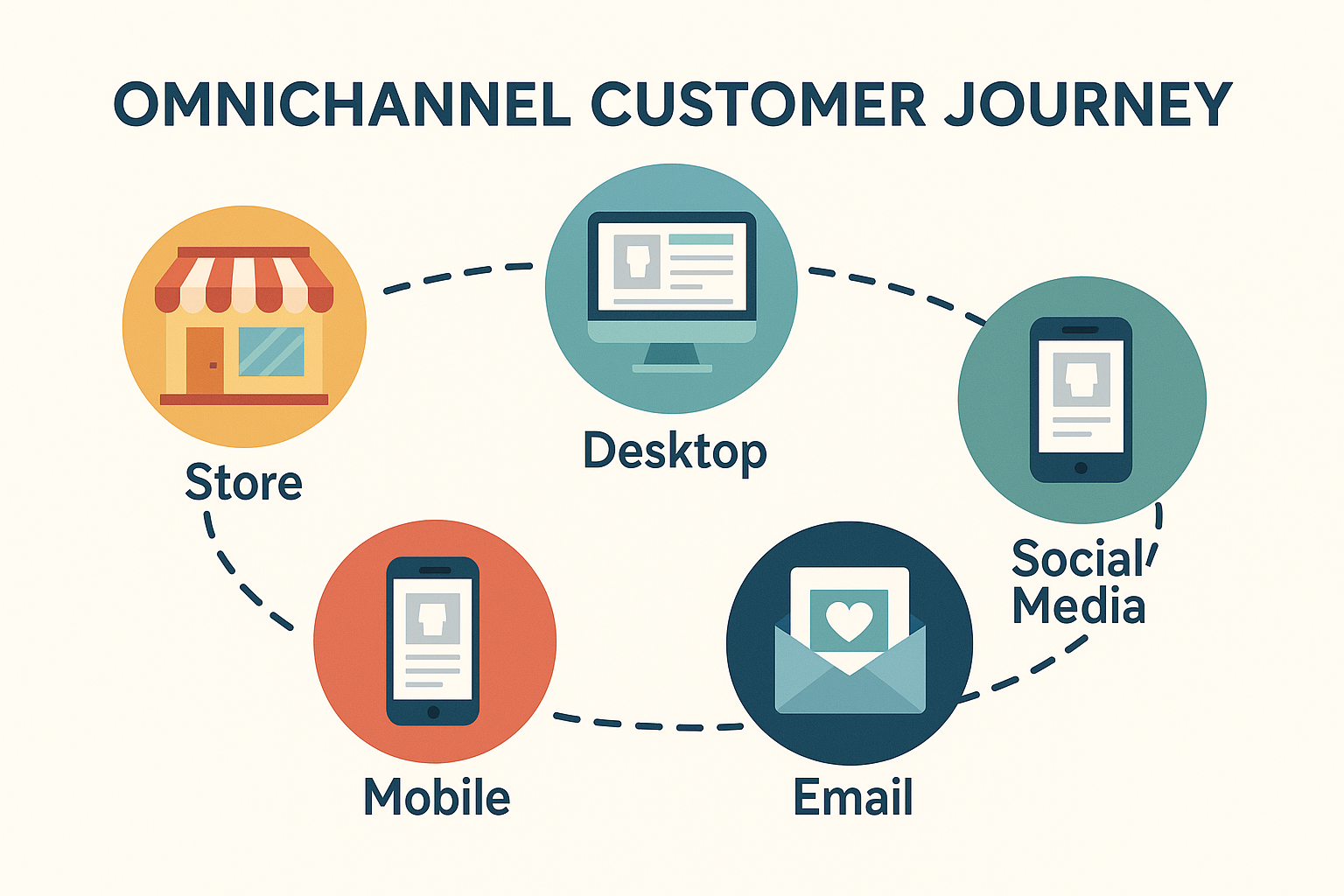Building an Omnichannel Customer Journey Map in 6 Steps
Why Every Brand Needs a Journey Map
Today’s consumers move fluidly between online and offline touchpoints — searching on mobile, comparing prices on desktop, and purchasing in-store.
Without an omnichannel customer journey map, marketers can’t see how those interactions connect.
A well-built journey map helps you understand customer motivations, identify friction points, and deliver consistent experiences across every channel.
Learn more about how this connects to omnichannel experiences.
Step 1: Define Your Objectives
Start by identifying the purpose of your journey map. Are you trying to:
Improve acquisition and conversion rates?
Enhance retention and customer satisfaction?
Unify data across departments?
Each objective determines which touchpoints and metrics to prioritize.
Step 2: Collect and Centralize Data
An accurate map depends on clean, complete data.
Pull insights from:
GA4 or Adobe Analytics for behavior tracking
CRM data for customer history
Support tickets or surveys for sentiment analysis
Unifying these sources creates a single customer view — the foundation of all omnichannel marketing.
See how this aligns with first-party data activation.
Step 3: Identify Key Touchpoints
List every channel where your customer interacts with your brand:
Paid media (search, social, display)
Owned media (website, app, email)
Earned media (reviews, referrals)
Offline (events, retail)
Mapping these stages ensures consistency across messaging, tone, and offer strategy.
Step 4: Visualize Emotions and Friction
Add emotional context to each step. What motivates or frustrates your customer at that moment?
For example:
Awareness stage → curiosity and research
Purchase stage → urgency or hesitation
Retention stage → satisfaction or churn risk
Understanding these emotional triggers allows you to align creative, content, and offers accordingly.
Step 5: Integrate Technology and Personalization
An omnichannel journey is only effective when your tools communicate.
Integrate your analytics, CRM, and ad platforms to automate experiences:
Dynamic email triggers based on browsing behavior
Personalized website banners for returning users
Coordinated ad sequencing across platforms
Explore how technology connects these experiences within data visualization and reporting.
Step 6: Measure and Optimize
Use dashboards to monitor key metrics:
Conversion rate by channel
Average time between interactions
LTV by segment
Cross-channel attribution
Continuous feedback loops help you refine the journey over time.
Final Thoughts
A customer journey map transforms complex data into actionable insights.
By visualizing every step, you create a framework for personalization, stronger engagement, and higher ROI.
Learn more about building connected experiences in omnichannel marketing strategies.

